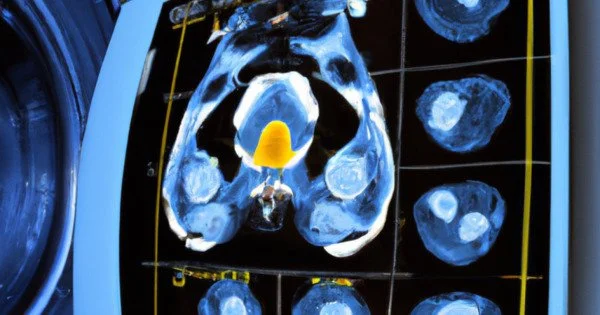MRI-guided radiotherapy is a new approach to delivering radiation therapy for localized prostate cancer that uses MRI scans to precisely target the tumor, while minimizing exposure to healthy surrounding tissue. This technique has been shown to produce fewer side effects and better quality of life for patients compared to traditional radiotherapy.
According to new UCLA Jonsson Comprehensive Cancer Center research, the precise targeting capabilities of MRI guidance resulted in fewer toxicities and better quality of life for men undergoing radiotherapy for localized prostate cancer, as judged by patients and doctors treating them.
The findings of the first randomized phase III clinical trial to directly compare MRI-guided SBRT to the same therapy guided by CT have been published in JAMA Oncology. They back up preliminary findings presented at the ASCO Genitourinary (GU) Cancers Symposium in San Francisco in 2022.
“MRI guidance offers several advantages over standard CT guidance, most notably the ability to dramatically reduce planning margins, providing more focused treatment with less injury to nearby normal tissues and organs,” said Amar Kishan, M.D., the study’s lead author and a radiation oncologist at UCLA’s David Geffen School of Medicine and the UCLA Jonsson Comprehensive Cancer Center.
MRI guidance offers several advantages over standard CT guidance, most notably the ability to dramatically reduce planning margins, providing more focused treatment with less injury to nearby normal tissues and organs.
Amar Kishan
“MRI technology is more costly than CT, both in terms of upfront equipment expenses and longer treatment times, which is one reason our study set out to determine if MRI-guided technology offers tangible benefits for patients.”
For prostate cancer, stereotactic body radiotherapy typically delivers radiation in five or fewer precisely targeted doses. It is a well-known and generally well-tolerated treatment, but it can cause toxicities that result in urinary, bowel, and sexual dysfunction. The Magnetic Resonance Imaging-Guided Stereotactic Body Radiotherapy for Prostate Cancer (MIRAGE) clinical trial, led by UCLA, included 154 analyzable patients with prostate cancer who were randomly assigned to either a CT-guidance arm (76 patients) or an MRI-guidance arm (78 patients).
A unique aspect of the study was its inclusion of outcome measures assessed by patients as well as physicians. From both perspectives, MRI-guided therapy was associated with fewer side effects and better quality of life over at least three months of follow-up.

“We demonstrated in this trial that the reduction in treatment volumes facilitated by MRI guidance leads to a significant reduction in moderate physician-scored toxicity and a reduction in the proportion of patients noting significant decrements in patient-reported outcome metrics in the near term,” Dr. Kishan said. “While more research is needed to confirm these benefits over time, we are hopeful that these findings will lead to better outcomes for men with prostate cancer.”
The 2-millimeter margin used with MRI guidance in the trial is the narrowest ever used in a large study. MRI technology, unlike CT, can directly monitor prostate motion and provides improved soft tissue contrast, improving the accuracy of alignment prior to radiation.
Overall, MRI-guided radiotherapy is a promising approach for the treatment of localized prostate cancer, as it may offer improved outcomes and fewer side effects compared to traditional radiotherapy techniques. However, more research is needed to fully evaluate the long-term benefits and risks of this approach.














